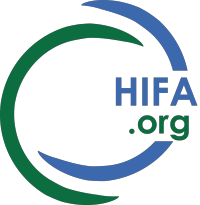From the WHO website: https://www.who.int/publications/i/item/9789240042377
WHO-ITU Be He@lthy, Be Mobile toolkit for myopia
Did you know that short-sightedness or near-sightedness are other names for myopia? They mean that a person can see clearly up close, but not well far away. Myopia is becoming more common in young children. This toolkit raises awareness of good eye health behaviours.
Overview
Myopia represents an important public health issue in the 21st century, affecting an estimated 2.6 billion people in 2020. Education campaigns play a vital role in the management of myopia and its associated complications, while also raising awareness of good eye care behaviours. In the context of the Be He@lthy Be Mobile initiative, the World Health Organization and the International Telecommunication Union have developed "A toolkit on how to implement MyopiaEd”. This toolkit includes evidence-based message libraries for key population groups, along with operational guidance and resources for adapting, implementing and monitoring the MyopiaEd programme. The toolkit is intended to assist policy- and decision-makers and implementers to establish a national or large-scale MyopiaEd programme.
--
Best wishes, Neil
Coordinator, mHIFA Project (Mobile Healthcare Information For All) - Supported by HIFA members
http://www.hifa.org/projects/mobile-hifa-mhifa
Let's build a future where every person has access to reliable healthcare information and is protected from misinformation - Join HIFA: www.hifa.org
HIFA profile: Neil Pakenham-Walsh is global coordinator of the HIFA global health movement (Healthcare Information For All - www.hifa.org ), a global community with more than 20,000 members in 180 countries, interacting on six global forums in four languages in collaboration with WHO. HIFA brings stakeholders together to accelerate progress towards universal access to reliable healthcare information.
Twitter: @hifa_org neil@hifa.org

